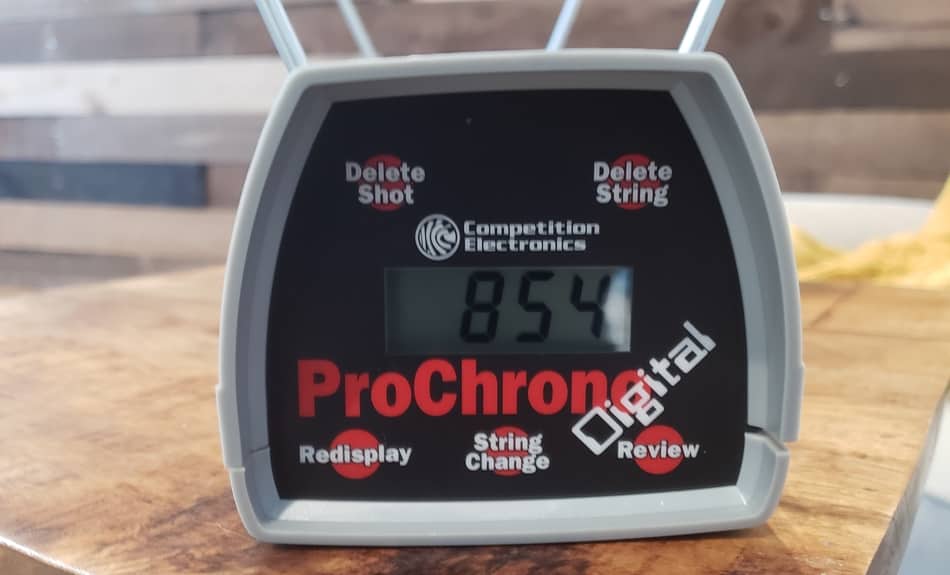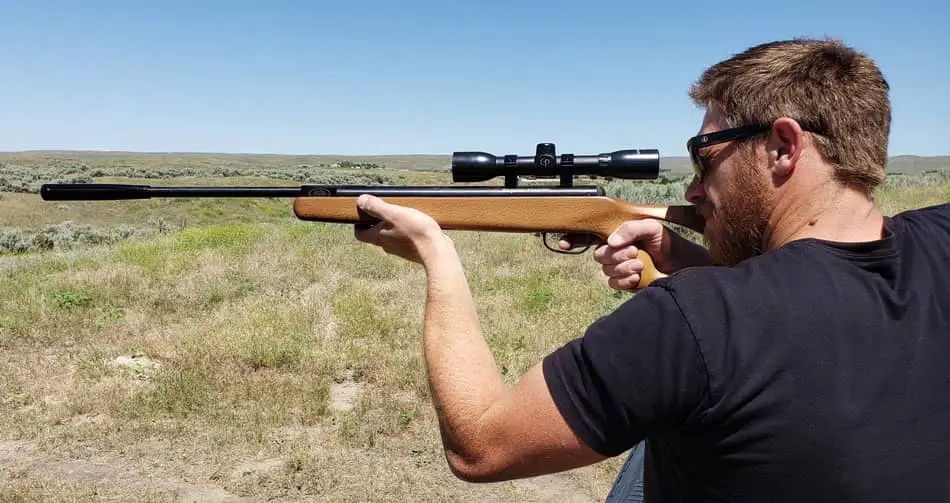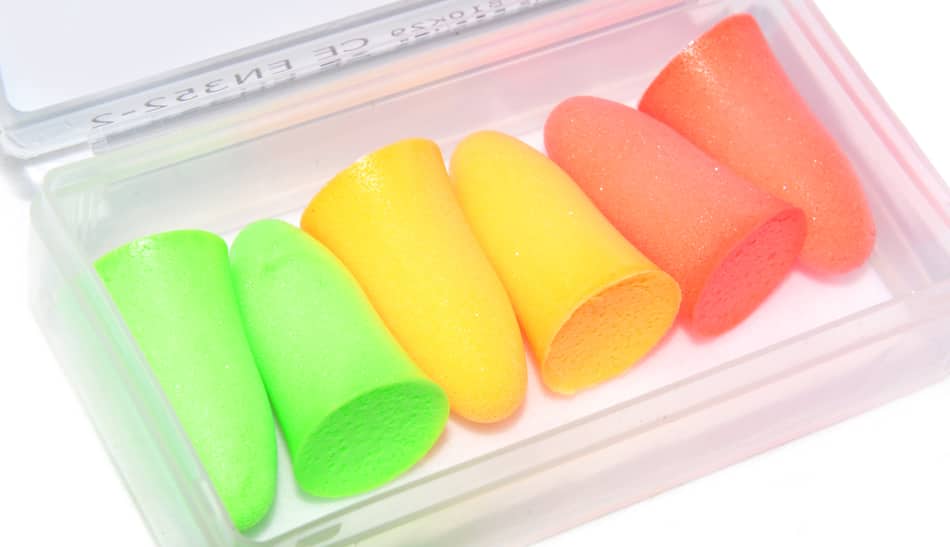
If you want a quality airgun, it may come in handy to know what a good benchmark is for the sport. So, how fast do airguns shoot?
BB guns and pellet guns have an fps range of 300 to 1400 feet per second. An adult springer airgun will shoot between 800 and 1200 fps. Generally, the more powerful the airgun, the faster the shot will be, but shape, size and weight of a pellet can affect the speed as well.
While speed is a great benchmark for understanding the power of a gun, it might not tell you everything you need to know.
What Speeds Could I Expect in a Pellet or BB Gun?
Generally, the BB guns that are meant for back yard shooting will have somewhere around 300 to 500 feet per second, but can climb up higher into the 1000 or more range if you get a high performance gun.
Pellet guns come in more shapes and sizes than BB guns do, but have similar ranges, though you would see that pellet guns tend to be more performance oriented than BB guns are. Many pellet guns, such as those springers, will hover around 800 or more feet per second.
If you are looking at the performance of a multi pump airgun, the performance will vary depending on how many pumps you put into it, but you can expect between 300 and 600 fps, though you can sometimes see more depending on the gun and how many pumps you put into it.
PCP’s, or precharged pneumatics, dominate when it comes to performance, almost always putting out more energy than any other type of airgun. If all you want is ridiculous speeds, a PCP will do it for you.
There are some springers that can reach 1400 or more feet per second, but these rely on a small combustion of a lubricating oil that makes its way inside the compression chamber. When the oil runs out, they do not fire as fast. But, it should be noted, the burning oil is bad for an airgun.
Unfortunately, makers of airguns will very often over estimate the speed that their guns are able to work at. If you pull out a chronograph (a device used to measure the speed of your pellet) you may be disappointed by a difference between the speed advertised on the box and the speed read to you by your chronograph.
There can be many reasons for this, one reason in particular could very well be that you are using a different kind of pellet than the manufacturer was using. We’ll talk a bit more about how this works later in the article, but if you are using a heavier pellet, it will go slower than a lighter one will.
What Speeds Should I Want in an Airgun?
The speeds that you deem optimal in an airgun will depend largely upon what you are using the gun for. For example, a hunter using an airgun will probably go for a PCP shooting at about 900 feet per second, where as an Olympic shooter will opt for a pellet gun shooting at 600 fps.
The hunter has a good velocity with a pellet that has enough energy that it can dump into the target, while also not sacrificing accuracy (we’ll talk about why accuracy drops if you go too fast in a little bit). The Olympic shooter doesn’t need any more velocity than what will give him the most accurate shot, since he is only shooting for accuracy.
A back yard plinker shouldn’t need much more than about 500 feet per second. Just enough to hit the target, not enough to damage anything too much if he misses. Many simple guns like the Red Ryder BB gun shoot at about 300 feet per second.
Many airgun manufacturers are pushing to get their guns to shoot pellets at 1000 or more feet per second. A lot of consumers want to see this, but these speeds are not ideal for shooting. Sometimes they will also use tactics that are kind of deceptive to get the readings that they advertise sometimes.
An all around good speed to be at is that 850 feet per second range, but like we said, velocity doesn’t tell you everything you need to know.
Why Doesn’t Speed Matter as Much as it Seems?

Again, the speed of your projectile is only part of the equation. Muzzle energy comes into play here as well.
Muzzle energy is very similar to muzzle velocity, but will tell us a bit more about the power of the gun and the energy that it gives to its projectile.
Where muzzle velocity is the speed that the projectile moves with as it leaves the gun, muzzle energy is how much kinetic energy that the projectile has when it leaves the gun.
A heavier pellet will travel slower than a lighter one shot by the same gun, but will have the same energy and hold onto it longer (because of aerodynamics) than the lighter one.
As an extreme example, a gun that will shoot with about 15 foot pounds of energy will hurl a typical pellet at about 1000 feet per second. If you somehow were able to shoot a grain of sand out of that same gun, which would have about 0.025% of the mass of a typical lead pellet, it would fly at 6000 feet per second.
That’s like, really fast.
So if you are having issues with accuracy because your gun is shooting too fast, try using a heavier pellet. It will slow down the speed your gun works at, which could help to put you near that 850 fps area.
This is also how some manufacturers are able to make an underpowered airgun seem to be more powerful than it actually is. They put an extremely light pellet in the gun, it shoots at a high velocity, and then they advertise with that higher speed on the box, even though the gun will only get half of that value when shooting normal pellets.
Not all manufacturers do that, but it is something you may want to be aware of when shopping around.
Why Would I Want to Slow My Airgun Down?
As we said before, there is an optimal speed that your pellet needs to be traveling at in order to avoid losing your accuracy. There are a few other factors that could come into play when talking about accuracy of guns, such as pellet shape and size, but speed will also have a huge affect on that.
As your pellet approaches the sound barrier, it compresses the air in front of it, essentially creating a wall that it has to push against. This wall has its own turbulence as well, so basically, the pellet generates a wall of turbulence that throws it around.
This self made problem is not noticeable at closer ranges generally, but the further out you go, as with any other accuracy issue, the more apparent the problem will be.
Are Faster Airguns Louder?

Your pellet gun will not gain any significant increase in volume as it shoots faster unless it breaks the sound barrier. If your gun breaks the sound barrier, then it will make a loud crack similar to a .22 caliber firearm.
We just talked about what happens as a pellet approaches the sound barrier in terms of what happens to the trajectory of the pellet, but there is another thing that you should be aware of when a pellet reaches the sound barrier. It makes noise. Like… a lot of it.
The sound barrier moves around a little bit, because there are different factors like altitude, temperature, and humidity that go into how fast sound travels, but you can usually put it to be somewhere around 1050 feet per second.
As your pellet gets closer to the sound barrier, the sound waves that it is making get close and closer to each other, until finally when it does go faster than sound, those sound waves overlap, and generate that loud crack associated with guns.
When a pellet goes super sonic, it makes a sound that would remind you of a .22 caliber firearm. The sound is not terribly loud, but if you don’t want your neighbor thinking that you are shooting a .22 firearm in your backyard, this is something that you should be aware of.
At What Speed is an Airgun Considered a Firearm?
An airgun is not a firearm, but certain local and national governments will treat them as such when the speed or the muzzle energy is higher than what they consider safer than a firearm.
The treatment that airguns get differ from locality to locality, where some don’t regulate them at all, but in others like the United Kingdom, if your air rifle is shooting at more than 12 foot pounds of energy, then it is effectively considered a firearm.
In the United States, the rules for airguns vary wildly. Check your local rules for what you can and cannot do with an airgun. Some city governments won’t allow you to shoot an airgun in city limits, treating them effectively like a firearm.
At What Speed is an Airgun Dangerous?
Airguns are dangerous at all speeds. 300 feet per second, which is the lower end of what you can expect from a BB gun, is enough to pierce skin at point blank, and enough to leave nasty welts at further distances.
Obviously, the further up we go in speed, the more dangerous our airgun will be. At 400 feet per second, a BB will have enough energy to kill with a lucky (or rather unlucky) shot. Shots to more vital parts of the body carry that greater risk of serious injury than other parts of the body do.
Take care to protect yourself when shooting. Always make sure that you are never shooting at anything that you do not intend to destroy, especially another person. Wear eye protection, especially when shooting BB guns. Lead pellets can ricochet, but BB’s are much more likely to do so and keep their energy better than pellets do when they ricochet.
